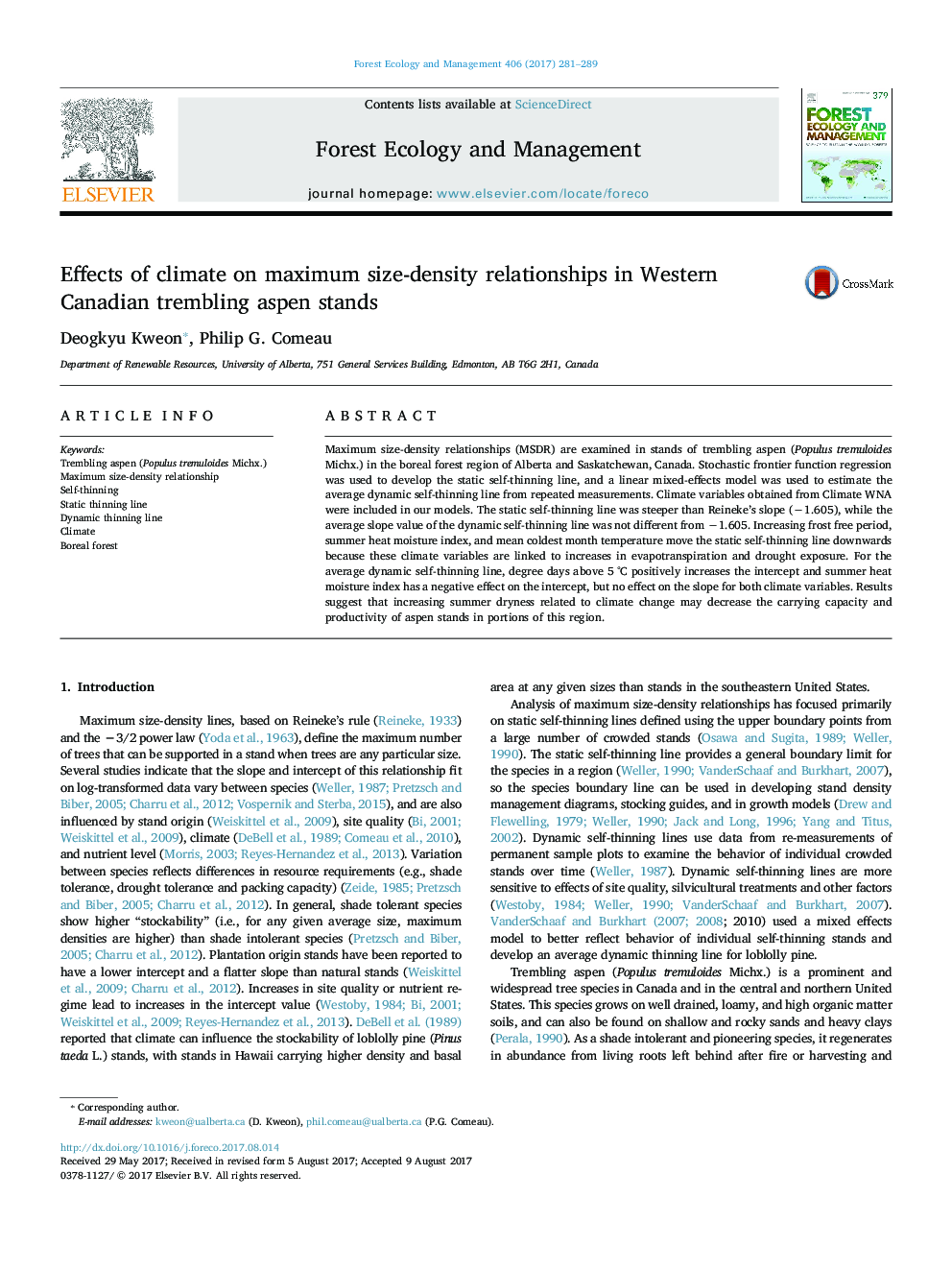| Article ID | Journal | Published Year | Pages | File Type |
|---|---|---|---|---|
| 6459016 | Forest Ecology and Management | 2017 | 9 Pages |
•Static self-thinning lines for smaller regions can be developed and used.•The study supports that climate is needed to develop static self-thinning lines.•In general, declines in maximum stocking occur as temperature and FFP increase.•The dynamic self-thinning line can better reflect effects of environmental factors.•Maximum density decreases as summer drought stress increases.
Maximum size-density relationships (MSDR) are examined in stands of trembling aspen (Populus tremuloides Michx.) in the boreal forest region of Alberta and Saskatchewan, Canada. Stochastic frontier function regression was used to develop the static self-thinning line, and a linear mixed-effects model was used to estimate the average dynamic self-thinning line from repeated measurements. Climate variables obtained from Climate WNA were included in our models. The static self-thinning line was steeper than Reineke’s slope (−1.605), while the average slope value of the dynamic self-thinning line was not different from −1.605. Increasing frost free period, summer heat moisture index, and mean coldest month temperature move the static self-thinning line downwards because these climate variables are linked to increases in evapotranspiration and drought exposure. For the average dynamic self-thinning line, degree days above 5 °C positively increases the intercept and summer heat moisture index has a negative effect on the intercept, but no effect on the slope for both climate variables. Results suggest that increasing summer dryness related to climate change may decrease the carrying capacity and productivity of aspen stands in portions of this region.
